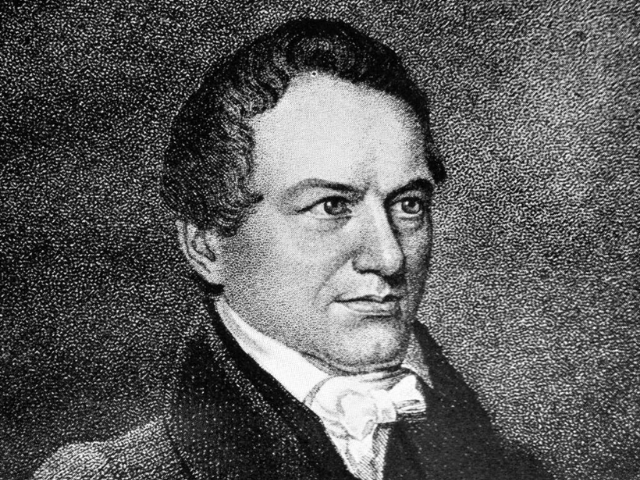
Robert Young Hayne (1791-1839). Wikimedia Commons.
(1791-1839) Hayne was born in Colleton to William Hayne and Elizabeth Peronneau. Hayne attended private school in Charleston but was unable to attend college because of his family’s poor financial situation. He studied law under Langdon Cheves, was admitted to the bar before turning twenty-one, and immediately began a lucrative practice. Hayne marriaged Frances Henrietta Pinckney in 1813 and Rebecca Brewton Alston in 1820, which greatly enhanced his wealth and social status.
Hayne was elected to the South Carolina House of Representatives in 1814 and became Speaker in 1818. That year, he was appointed South Carolina’s attorney general, serving until 1822 when the legislature elected him to the U.S. Senate. During his first years in the Senate, Hayne supported a nationalist agenda but soon became an advocate for states’ rights in the late 1820s. Hayne believed that tariffs would lead to the domination of the North over the South, and of the federal government over the state governments. In December 1829 Senator Samuel Foot of Connecticut introduced a measure to restrict the sale of public western lands. Hayne supported Senator Thomas Hart Benton of Missouri, contending that Foot’s proposal would restrict access to cheap western land and thereby create a dependent labor source for eastern manufacturers. Furthermore, restricted land sales would inflate prices and provide unnecessary revenue for the federal government, encouraging corruption and consolidation. Senator Daniel Webster of Massachusetts countered that Hayne’s fear of consolidation and Benton’s belief in eastern malice toward the West were unfounded. Thus began an oratorical contest that forever linked Hayne and Webster. For two weeks in early 1830, the two senators clashed over western lands, slavery, the Constitution, and nullification. The Webster-Hayne debate concluded with Webster’s ringing endorsement of “Liberty and Union, now and forever, one and inseparable” and , Hayne believing that a state could prevent a federal law from being enforced within its borders.
In 1832, Hayne turned his Senate seat over to John C. Calhoun and was elected to governor of South Carolina. When Congress passed another tariff in 1832, Hayne advocated a state nullification convention, then presided over the body which voided the tariff in South Carolina. In response to President Andrew Jackson’s “Proclamation to the People of South Carolina” and the Force Bill, Hayne called for ten thousand troops to defend the state from the federal government. However, when Henry Clay offered a compromise for ending the crisis, Hayne supported rescinding the nullification ordinance and served over the body which did so. After the Compromise of 1833 had been effected, Hayne finished his term working to reconcile nullification factions within South Carolina.
While serving as mayor of Charleston from 1835 to 1837, Hayne became interested in railroads as a means to expand trade and commerce in the port city. He proposed, and received support in, extending the existing railroad between Charleston and Hamburg through the Blue Ridge Mountains and into the Old Northwest, opening the states of Kentucky and Ohio as markets for the port of Charleston. The Louisville, Cincinnati and Charleston Railroad Company was formed in 1836, and Hayne served as its first president.


